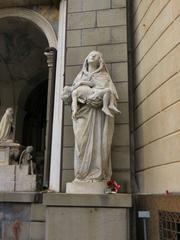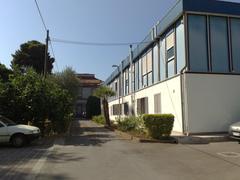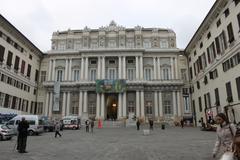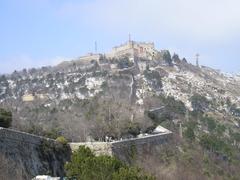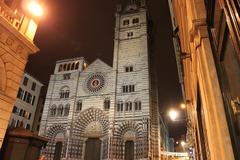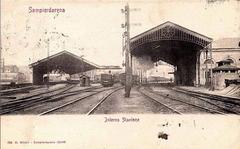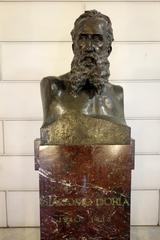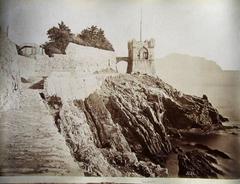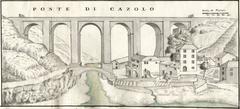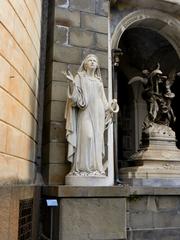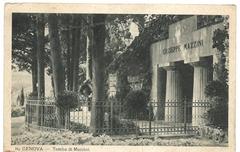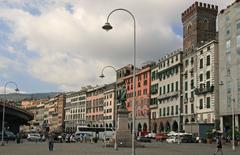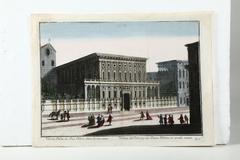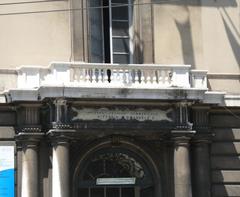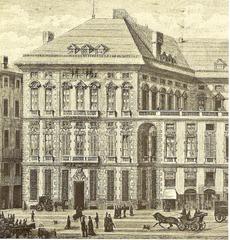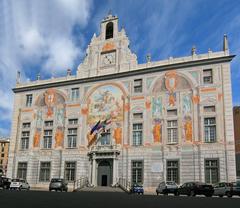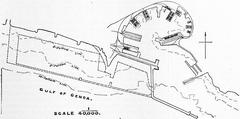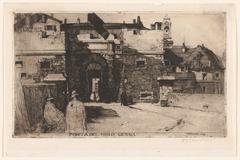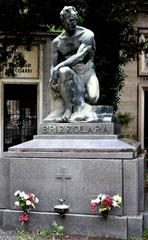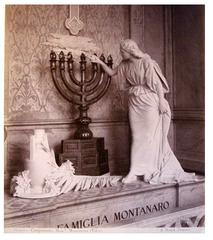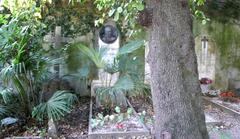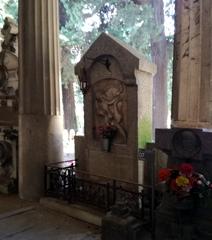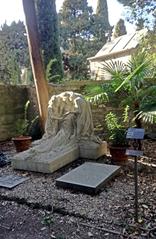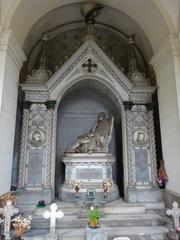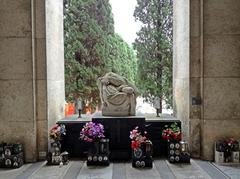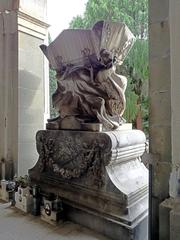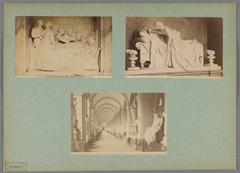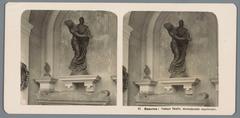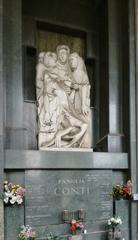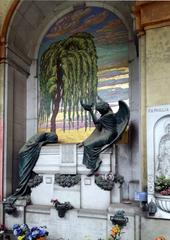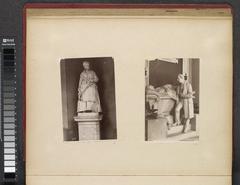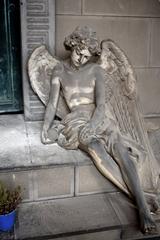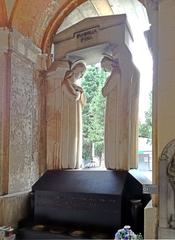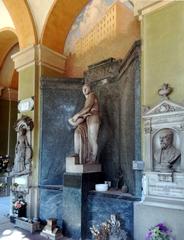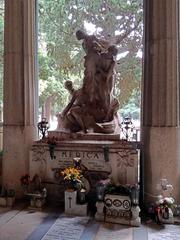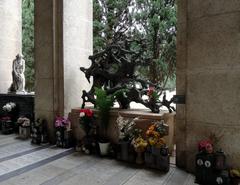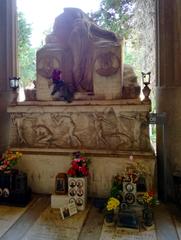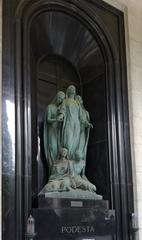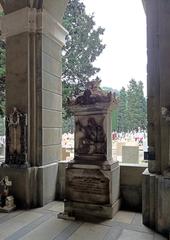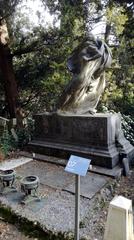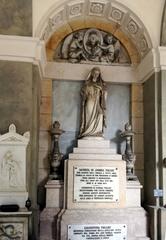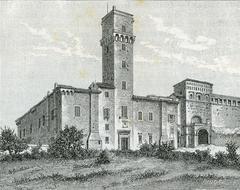A Journey Through Genoa: Discovering the Hidden Charms of Italy’s Maritime Gem
Publication Date: 14/08/2024
Welcome to Genoa: Unveiling the Maritime Marvel
Welcome to Genoa, a city where history, culture, and vibrant modern life blend seamlessly. Imagine walking through narrow medieval alleys, the scent of fresh basil and sea breeze in the air, while echoes of ancient mariners’ tales linger around every corner. Genoa is not just a city; it’s a living, breathing museum of hidden marvels and untold stories. From its ancient Ligurian roots, where trade with Etruscans and Greeks laid the foundations of a bustling port, to its rise as a powerful independent city-state in the Middle Ages, Genoa’s history is a captivating narrative of resilience and innovation (Wikipedia).
Fast forward to the Renaissance, and Genoa stands tall among the mighty Repubbliche Marinare, a hub of trade, shipbuilding, and banking. The Genoese were not just merchants; they were master sailors and fierce warriors, embodying the city’s spirit of adventure and enterprise. Leap into the modern era, and you’ll find Genoa as a vital cog in the Italian economic miracle, hosting the grand Genoa International Boat Show and evolving into an industrial powerhouse (Wikipedia).
Yet, Genoa is not just about grand historical narratives. It’s about the little things that make it unique—the labyrinthine alleys of the historic center, the vibrant cultural scene, and the culinary delights that tantalize your taste buds. Whether you’re wandering down Via Garibaldi, flanked by 16th-century residences and museums filled with Renaissance masterpieces, or savoring a plate of fresh pesto in a local trattoria, Genoa offers a sensory feast for every traveler (We Are Travel Girls).
Ready to explore this hidden gem? Genoa awaits with its rich tapestry of history, culture, and modern vibrancy. Let’s embark on this journey through time and taste, and uncover the secrets of Genoa together.
What’s Inside This Guide
- Genoa: The City of Hidden Marvels
- Prehistory and Antiquity
- Middle Ages and Renaissance
- Modern Era
- Urban Development and Social Movements
- Industrial and Economic Developments
- Recent History
- Cultural Significance
- Visitor Tips for Genoa, Metropolitan City of Genoa, Italy
- Welcome to Genoa – The Hidden Gem of Italy!
- Best Time to Visit
- Getting Around
- Accommodation
- Safety
- Language
- Currency and Payments
- Dining and Cuisine
- Attractions and Sightseeing
- Historic Center (Centro Storico)
- Old Port (Porto Antico)
- Spianata Castelletto
- Shopping
- Day Trips
- Practical Tips
- Cultural Etiquette
- Accessibility
Genoa: The City of Hidden Marvels
Prehistory and Antiquity
Imagine a time when the land that would become Genoa was dotted with mysterious stone tools and pottery shards, silent witnesses to a bygone era. Since the fifth or fourth millennium BC, this area has seen the footsteps of the ancient Ligures, the very people who gave Liguria its name. Unearthed treasures tell tales of bustling trade with Etruscans and Greeks, making this ancient ground a melting pot of cultures (Wikipedia).
Fast forward to the fifth century BC, and you’ll find the first town perched on the hill of Castello. Called Stalia or Σταλìα, this Ligurian city found itself in the thick of the Second Punic War, aligning with Rome only to be razed by Carthaginians in 209 BC. Yet, like a phoenix, it rose again, gaining municipal rights after the Carthaginian Wars ended in 146 BC (Wikipedia).
Middle Ages and Renaissance
Before the clock struck 1100, Genoa had already made a name for itself as an independent city-state. Picture bustling markets and docks brimming with ships, where consuls, chosen annually, held the reins of power. Genoa wasn’t just any city-state; it was one of the mighty Repubbliche Marinare, standing tall alongside Venice, Pisa, and Amalfi. The phrase “Genuensis ergo mercator” (A Genoese therefore a merchant) wasn’t just a saying; it was a way of life, as the city thrived on trade, shipbuilding, and banking. The Genoese were not just merchants; they were master sailors and fierce warriors (Wikipedia).
Modern Era
Leap into the post-war years, and you’ll find Genoa as a vital cog in the Italian economic miracle, forming the third corner of the Industrial Triangle with Milan and Turin. The Genoa International Boat Show, born in 1962, is now one of the city’s grandest annual events. The city blossomed into an industrial powerhouse, hosting manufacturers of diving equipment, ferries, oil, textiles, and even nuclear reactors at one time (Wikipedia).
Urban Development and Social Movements
As Genoa’s population swelled, new neighborhoods sprang up, but not without cost. The historic districts of Piccapietra-Portoria and Madre di Dio were lost to redevelopment, leaving indelible marks on the city’s collective memory. The political landscape shifted with the founding of Lotta Comunista in 1965. Tragic events like the shipwreck of the SS London Valour in 1970 and Greek student Kostas Georgakis’s self-immolation in Matteotti Square cast long shadows, but also inspired the city’s songwriters and activists (Wikipedia).
Industrial and Economic Developments
Genoa’s industrial scene is a tapestry of steelworks, metallurgy, oil refining, and energy companies. In 1921, the iconic Moto Guzzi was founded here. The city also hosted the pivotal Genoa Conference in 1922. The fascist era saw the creation of “Greater Genoa,” uniting nineteen municipalities into a sprawling urban expanse along the coast (Wikipedia).
Recent History
The 27th G8 summit in 2001 turned Genoa into a battleground of protests and police violence, tragically resulting in the death of Carlo Giuliani. The aftermath saw convictions of officials for their roles in the mistreatment of protesters. Yet, Genoa also celebrated triumphs, like being named the European Capital of Culture in 2004, and the founding of the Five Star Movement by Beppe Grillo in 2009. The city has faced natural and man-made disasters, from floods in 2011 to the collapse of a control tower in 2013, and the dismantling of the Costa Concordia wreck in 2014 (Wikipedia).
Cultural Significance
Genoa is a treasure trove of history, reflected in its architecture, cuisine, and cultural institutions. Its historic center is one of Europe’s largest medieval city centers, boasting UNESCO World Heritage Sites. Walk down Via Garibaldi, the “golden street,” and you’ll be flanked by 16th-century residences and museums filled with Renaissance masterpieces. The Palazzo Reale, with its opulent furnishings and artworks, stands as a testament to Genoa’s grandeur (We Are Travel Girls).
Visitor Tips
To truly experience Genoa, wander the labyrinthine alleys of the city center on foot. The best time to visit is during the dry season between April and October, with April, May, September, and October being less crowded. While Genoa is relatively safe, be vigilant against pickpockets and scammers. Embrace local customs and etiquette to fully appreciate the city’s rich culture (Chester Travels).
Visitor Tips for Genoa, Metropolitan City of Genoa, Italy
Welcome to Genoa – The Hidden Gem of Italy!
Imagine a city where medieval charm meets modern vibrancy, where every alley whispers tales of ancient mariners, and where the scent of fresh basil and sea breeze fills the air. Welcome to Genoa, a city that’s as intriguing as it is beautiful!
Best Time to Visit
Genoa enjoys a Mediterranean climate, making it a year-round destination. However, the best times to visit are during the spring (April to June) and fall (September to October) when the weather is pleasant, and the tourist crowds are thinner. During these periods, you can enjoy outdoor activities and sightseeing without the intense summer heat or winter chill. The Rolli Days in May and the Salone Nautico in September are notable events that attract many visitors.
Getting Around
Genoa is a walkable city, especially in the historic center. The narrow lanes (caruggi) and steep streets can be best explored on foot. However, the city’s topography means that some areas involve steep climbs. Utilize the city’s public transportation, including buses, trams, and funiculars, to navigate these areas. The Hop-on Hop-off bus is a convenient option for tourists, stopping at major attractions and allowing unlimited travel for 24 hours.
Accommodation
When choosing where to stay, consider proximity to the Old Town or the harbor. These areas are central to most attractions and offer a range of accommodations from luxury hotels to budget options. Booking in advance is recommended, especially during peak tourist seasons and major events. For a unique experience, consider staying in one of the historic palaces converted into hotels.
Safety
Genoa is generally safe for tourists, but like any major city, it’s wise to stay vigilant. Keep an eye on your belongings, especially in crowded areas like the Old Port and public transportation. Avoid poorly lit areas at night and be cautious of pickpockets in busy tourist spots.
Language
Italian is the official language, but English is widely understood in tourist areas. Learning a few basic Italian phrases can enhance your experience and is appreciated by locals.
Currency and Payments
Italy uses the Euro (€). Credit and debit cards are widely accepted, but it’s advisable to carry some cash for small purchases, especially in local markets and smaller establishments. ATMs are readily available throughout the city.
Dining and Cuisine
Genoa is renowned for its culinary delights, particularly pesto and focaccia. Seafood is also a regional specialty. For an authentic experience, try local dishes like “fritto misto al mare” and visit traditional trattorias. Street food is popular, and you can find delicious options like farinata (chickpea pancake) and panissa (fried chickpea dough). Tipping is not obligatory but appreciated; rounding up the bill or leaving a small amount is customary.
Attractions and Sightseeing
Historic Center (Centro Storico)
The historic center is a UNESCO World Heritage Site, featuring narrow alleys, medieval buildings, and charming squares. Key sites include the Palazzi dei Rolli, Cathedral of San Lorenzo, and Christopher Columbus House.
Old Port (Porto Antico)
The Old Port has been revitalized and is now a hub of activity with museums, the Genoa Aquarium, and the panoramic lift Bigo. It’s a great place for a stroll, dining, and enjoying the waterfront views.
Spianata Castelletto
For breathtaking views of the city and harbor, visit the Spianata Castelletto. Accessible by a short elevator ride, this viewpoint offers a panoramic perspective of Genoa’s skyline.
Shopping
Genoa offers a mix of high-end boutiques, local markets, and artisanal shops. Via XX Settembre is the main shopping street, while the Mercato Orientale is perfect for fresh produce and local delicacies. Don’t miss the chance to buy local products like pesto, olive oil, and handmade crafts.
Day Trips
Genoa is an excellent base for exploring the Italian Riviera. Popular day trips include Portofino and the Cinque Terre, both easily accessible by train or boat. These picturesque coastal villages offer stunning scenery, hiking trails, and charming seaside towns.
Practical Tips
- Dress Code: While casual attire is acceptable, some religious sites require modest clothing (covered shoulders and knees).
- Electricity: Italy uses Type C, F, and L plugs with a standard voltage of 230V. Bring a universal adapter if needed.
- Emergency Numbers: The general emergency number is 112. For medical emergencies, dial 118.
- Wi-Fi and Connectivity: Free Wi-Fi is available in many public areas, hotels, and cafes. Consider purchasing a local SIM card for better connectivity.
Cultural Etiquette
Italians value politeness and respect. Greet people with a friendly “Buongiorno” (Good morning) or “Buonasera” (Good evening). When dining, it’s customary to wait for everyone to be served before starting your meal. Public displays of affection are common, but loud or disruptive behavior is frowned upon.
Accessibility
Genoa’s historic center can be challenging for those with mobility issues due to its narrow, cobbled streets and steep inclines. However, many attractions are accessible, and public transportation is equipped to assist travelers with disabilities. Plan your route in advance and check for accessibility options at specific sites.
By following these tips, visitors can make the most of their trip to Genoa, enjoying its rich history, vibrant culture, and stunning coastal scenery. For more detailed information, refer to the comprehensive guides available online, such as those from Nomads Travel Guide, Lonely Planet, and Flytrippers.
Embark on Your Genoa Adventure with Audiala
As our journey through Genoa comes to an end, it’s clear that this city is a treasure trove of history, culture, and culinary delights. From its ancient Ligurian roots to its rise as a powerful maritime republic, and finally, its modern-day status as a cultural and industrial hub, Genoa’s story is one of resilience and transformation. The city’s medieval architecture, vibrant cultural scene, and mouth-watering cuisine offer a unique and immersive experience for every visitor (Wikipedia).
But Genoa is more than just its famous landmarks and historical sites. It’s the hidden gems, the quirky customs, and the lesser-known spots that truly capture the city’s essence. Whether it’s strolling through the narrow caruggi of the historic center, enjoying the panoramic views from Spianata Castelletto, or indulging in local dishes like farinata and panissa, Genoa offers countless opportunities to explore and discover.
So, why not make your visit to Genoa even more enriching with Audiala, our tour guide app? With expertly crafted audio guides, Audiala unlocks Genoa’s secrets and stories, providing deep insights and hidden gems that you won’t find in typical guidebooks. Download Audiala before your visit and let it be your companion in uncovering the marvels of this incredible city. Your adventure in Genoa awaits, and with Audiala by your side, you’re sure to have an unforgettable experience.
Sources and Further Reading
- Wikipedia. (n.d.). History of Genoa. Retrieved from Wikipedia
- We Are Travel Girls. (n.d.). Genoa, Italy. Retrieved from We Are Travel Girls
- Chester Travels. (n.d.). Genoa Travel Guide. Retrieved from Chester Travels
- Discover Northern Italy. (n.d.). Things to do in Genoa. Retrieved from Discover Northern Italy
- Flytrippers. (n.d.). Things to do in Genoa, Italy. Retrieved from Flytrippers
- Road Affair. (n.d.). 1 Day in Genoa Itinerary. Retrieved from Road Affair
- PlanetWare. (n.d.). Tourist Attractions in Genoa. Retrieved from PlanetWare
- Nomads Travel Guide. (n.d.). Genoa City Guide. Retrieved from Nomads Travel Guide
- Lonely Planet. (n.d.). First Time Guide to Genoa. Retrieved from Lonely Planet





